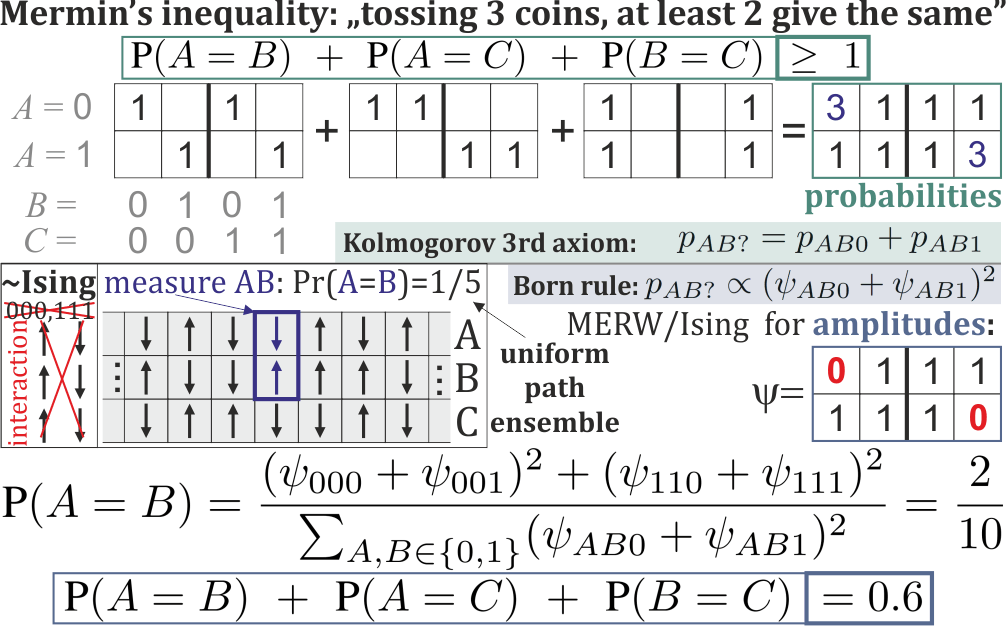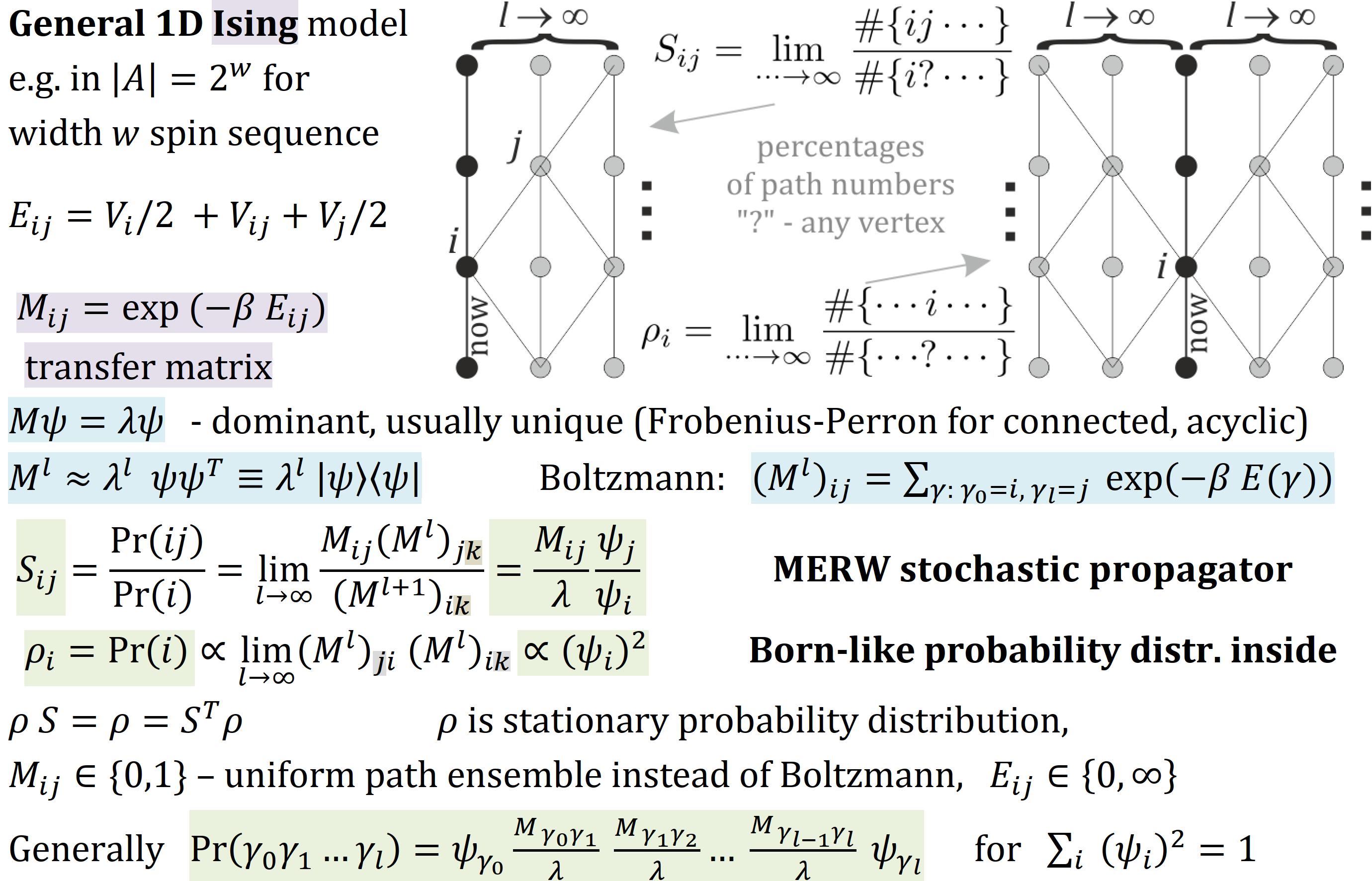Quantum mechanics is equivalent with Feynman path ensemble, which after Wick rotation becomes Boltzmann path ensemble, which can be normalized into stochastic process as maximal entropy random walk (MERW).
But Boltzmann path ensemble has also spatial realization: 1D Ising model and its generalizations: Boltzmann distribution among spatial sequences of spins or some more complicated objects.
For $E_{uv}$ energy of interaction between $u$ and $v$ neighboring spins or something more general, define $M_{uv} = \exp(-\beta E_{uv})$ as transition matrix and find its dominant eigenvalue/vector: $M \psi = \lambda \psi$ for maximal $|\lambda|$. Now it is easy to find (e.g. derived here) that probability distribution of one and two neighboring values inside such sequence are:
$$Pr(u) = (\psi_u)^2\qquad\qquad Pr(u,v) = \psi_u \frac{M_{uv}}{\lambda} \psi_v$$
The former resembles QM Born rule, the latter TSVF – the two ending $\psi$ come from propagators from both infinities as $M^p \approx \lambda^p \psi \psi^T$ for unique dominant eigenvalue thanks to Frobenius-Perron theorem. We nicely see this Born rule coming from symmetry here: spatial in Ising, time in MERW.
Having Ising-like models as spatial realization of Boltzmann path integrals getting Born rule from symmetry, maybe we could construct Bell violation example with it?
Here is MERW construction (page 9 here) for violation of Mermin’s Pr(A=B) + Pr(A=C) + Pr(B=C) >= 1 inequality for 3 binary variables ABC, intuitively “tossing 3 coins, at least 2 are equal” (e.g. here is QM violation):
From Ising perspective, we need 1D lattice of 3 spins with constraints – allowing neighbors only accordingly to blue edges in above diagram, or some other e.g. just forbidding |000> and |111>.
Measurement of AB spins is defect in this lattice as above – fixing only the measured values. Assuming uniform probability distribution among all possible sequences, the red boxes have correspondingly 1/10, 4/10, 4/10, 1/10 probabilities – leading to Pr(A=B) + Pr(A=C) + Pr(B=C) = 0.6 violation.
Could this kind of spin lattice construction be realized?
What types of constraints/interaction in spin lattices can be realized?
While Ising-like models provide spatial realization of Boltzmann path integrals, is there spatial realization of Feynman path integrals?
Update: sketch of derivation of the formulas above of probabilities inside Ising's Boltzmann sequence ensemble:


